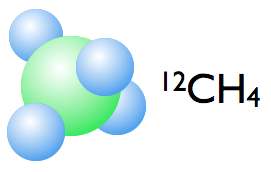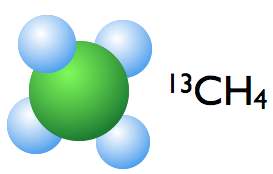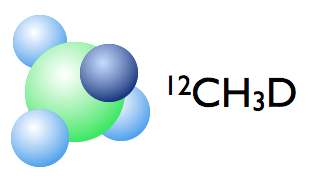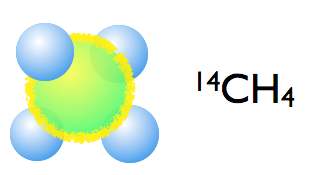|
Okay, back to science for now in the blog... my project on SWERUS-C3 is measurements of methane in the atmosphere in the SWERUS-C3 study area. But what exactly is methane?
Methane is a relatively common gas in the atmosphere – there are on average a bit less than 2 parts per million of methane in the Arctic atmosphere. Two parts per million sounds like a small amount, but many important gases in the atmosphere are “trace gases” – gases that exist in small proportion to the dominant nitrogen, oxygen, and argon. Methane is odorless and colorless. Methane is also the major component of “natural gas”, a major fossil fuel source. And methane has many other sources: forest fires, rice paddies, landfills, sewage plants, rivers, lakes, streams, swamps, bogs, termites (a surprisingly large source!), oceans, and numerous other sources. Methane is found nearly everywhere on Earth.
Atmospheric scientists care about methane because it is a powerful greenhouse gas, more powerful than carbon dioxide. However, methane only lasts about 9 years in the atmosphere, far less than carbon dioxide. From a practical point of view, that means that reducing the amount of methane in the atmosphere is a quick way to reduce the greenhouse effect. (Reducing methane alone doesn’t solve the longer-lasting problem with carbon dioxide.) Finally, there is some evidence in the geologic record that rapid changes in atmospheric methane have led to rapid climate change in Earth’s history – another good reason to understand how methane works in the Earth’s systems.
Some of the sources of methane are controlled by humans, but many are not; they’re controlled by natural processes. We can’t reduce the amount of methane in the atmosphere simply by driving our cars less, for instance. Plus, we don’t understand all the sources and sinks of methane perfectly (“sinks” are processes that remove methane from the atmosphere). Nor is it well understood how these sources and sinks will change in a changed climate.
So, what is methane? A molecule of methane consists of one carbon atom and four hydrogen atoms. They are always arranged with the carbon atom in the center, like this:

The colors (carbon=green, hydogen=blue) are fanciful, of course.
The shape of a methane molecule is a tetrahedron – a four-sided pyramid, with the carbon atom in the centre, and the hydrogen atoms arranged at the corners of the pyramid. If every methane molecule were exactly the same, and we examined methane gas in the atmosphere, we’d only know how much there was. We’d have no way of knowing where that methane came from. Fortunately, every methane molecule is not exactly the same.
There are actually several types of carbon atoms, and several types of hydrogen atoms. These types, or “isotopes”, are slightly heavier or lighter than regular carbon or hydrogen. (A somewhat general-interest article from late last year about the history of isotopes in chemistry written by myself and a colleague is available here: http://dx.doi.org/10.1038/nchem.1810 You may need a subscription, but if you’re reading this from a university, they likely have a subscription for the journal article.)
Carbon has three common isotopes: carbon-12 is about 98.9% of all carbon on earth. About 1.1% is carbon-13. There is also a tiny amount of carbon-14, which is radioactive, is constantly being produced in the Earth’s atmosphere, and has a half-life of a little over 5700 years. If you’re reading this, you have all three types of carbon in your body.
Hydrogen has three common isotopes, hydrogen-1, hydrogen-2 (also called deuterium), and hydrogen-3 (also called tritium). Hydrogen-1 is about 99.985% of all the hydrogen on earth; only about 0.015% is hydrogen-2. Hydrogen-3 has only a 12-year half-life, and it is quite rare.
You may realize now that with three isotopes of carbon, and three of hydrogen, there are many different “types” of methane molecules. But, because carbon-12 and hydrogen-1 are so much more common than the other forms, most methane contains 1 carbon-12 atom and 4 hydrogen-1 atoms. But there are several more common forms of methane that we can measure: carbon-13 with 4 hydrogen-1 atoms. And carbon-12 with 3 hydrogen-1 atoms and 1 hydrogen-2 atoms (image):



(Same colors as earlier, and the dark green sphere represents carbon-13; the light-green sphere carbon-12, the dark blue sphere deuterium.)
These are the three types (“isotopologues”) of methane molecules that we are measuring in the atmosphere during SWERUS-C3. Additionally, Célia Sapart, one of our coworkers, is collecting samples of methane to analyze after the SWERUS-C3 cruise is over for their content of 14CH4.

By observing the relative amounts of these isotopologues of methane, we hope to learn more about where the methane that we observe in the atmosphere is coming from. It’s not merely about knowing how much methane there is, we need to know where the methane comes from as well! (We have some other methods of determining where the atmospheric methane is coming from as well, which I hope to blog about later.) In addition to the atmospheric methane studies, other researchers on SWERUS-C3 are measuring the 12CH4, 13CH4, and 14CH4 isotopologues of methane in seawater. In the seawater, like the air, we want to know where the methane is coming from.
|


















